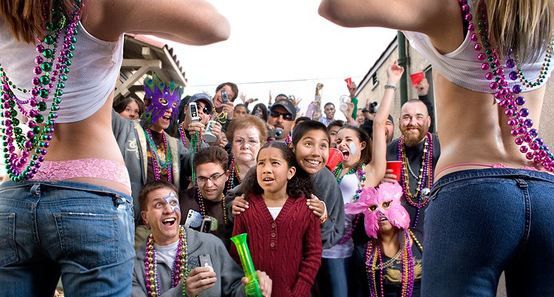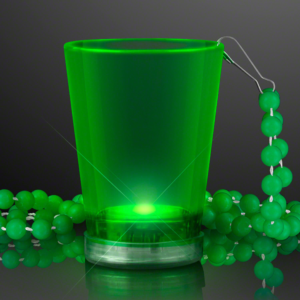Throw Me Something, Mister! An Introduction to Mardi Gras Beads
25 Million Pounds!
During the Carnival season in the early part of the year, it is estimated that 25 million pounds of Mardi Gras beads are thrown at different events around the city of New Orleans. These colored trinkets are associated with wild fun whether they are flying from a parade float, decorating an office celebration or offered as a welcoming gift for party guests at your home. The beads have a history that stretches all the way back to the 1800s.
Parades, Krewes and Throws
In New Orleans, parades are a major part of the Mardi Gras celebration. Local people work all year at preparing floats, costumes and performances. The organizations that sponsor individual floats are known as krewes. Some krewes have histories that go back decades with multiple generations working on a float. Somewhere in the middle of the 1800s, krewe members started throwing trinkets and prizes to children and other parade spectators. Young children would cry out, “Throw me something, mister!” as a way to get the attention of those dispensing these gifts. The practice of adults exposing themselves as a way to draw the attention of krewe members did not start until the free love era of the 1970s.
The items that are passed are known as throws. Throws come in all shapes and sizes. Krewe members have been known to throw small toys, hula hoops, hats and plastic coins from their floats. One krewe, the Zulu Social Aid and Pleasure Club, is known for its history of throwing painted Zulu coconuts into the crowd. To prevent injury, they have adopted the practice of handing the hard projectiles to spectators.
The most well-known throws are the beaded necklaces that come in many different colors. Originally, these were cheap glass beads that were liable to break on impact. Switching to plastic made these items lighter and more durable. A typical strand is 33-inches long. With a price under 50 cents per necklace, they are not very expensive. However, the cost adds up when you consider how many are used each season. In a single parade, a krewe will go through more than 10 cases of the ornaments. A case usually holds 100 necklaces.
Wild Weeks of Celebration
Carnival is the festive season that runs from January 6, the last day of the Christmas season, to Shrove Tuesday, the day before the Christian holy day of Ash Wednesday. Shrove Tuesday, or Mardi Gras in French, became a day of wild celebration before the serious season of Lent. Many people give up their favorite food and drink as a sign of devotion during the Lenten season. Shrove Tuesday was a day for a final indulgence. Over the years, the party expanded so that there were celebrations throughout all of January and most of February.
A Symbolic Color Scheme
The three major colors of the beads come from 1872 when the Russian Grand Duke Alexis and his family were guests of the city. One of the krewes adopted his family color scheme of purple, gold and green as their own. As the years passed, the resident of New Orleans began to give their own symbolism to the colors. Gold represents the power of the people. Green stands for the power of faith. Purple symbolizes the power of justice. Together, the colors represent the virtues of this important city in Louisiana.







